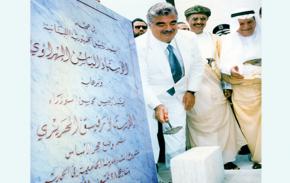إن اسهامات رفيق الحريري الخيرية والإنمائية لا تحصى، وأبرزها المساعدات المتعددة الأوجه لستة وثلاثين ألف طالب جامعي في جامعات لبنان وخارجه
أنت هنا
VIEWING EUROPE FROM THE OUTSIDE: CULTURAL ENCOUNTERS AND EUROPEAN CULTURE CRITIQUES IN THE EIGHTEENTH-CENTURY PSEUDO-ORIENTAL TRAVELOGUE AND THE NINETEENTH-CENTURY “VOYAGE EN ORIENT”
التبويبات الأساسية
Syrine C. HOUT
|
Univ. |
Columbia University |
Spec. |
English & Comparative Literature |
Deg. |
Year |
# Pages |
|
Ph.D. |
1994 |
470 |
In my dissertation I reexamine the portrayal of cultural encounters between East an West in the eighteenth-century pseudo-oriental satirical travelogue and the nineteenth-century literary “Voyage en Orient” in the English and French traditions. Focusing on the rhetoric of travel , whether based on an actual journey or not, I argue that although the eighteenth-century subgenre of Orientalist discourse had itself become less frequent by the beginning of the following century, its underlying principle, namely cultural self-criticism, had not. I illustrate how critiques of Europe lived on in practice, at times manifest and others latent, in a new and as yet undefined genre: the nineteenth-century literary travel account.
More significantly, II contend that two basic visions of encounters can be found in both kinds of writing. To demonstrate this, I pair off one eighteenth- and one nineteenth-century text in parts I (Lettres Persanes by Montesquieu (1721) and Itinéraire de Paris à Jérusalem by chateaubriand (1811) as Chapters 1 and 2) and II (The Citizen of the World by Oliver Goldsmith (1762) and Voyage en Orient (1851) by Gérard de Nerval as Chapters 3 and 4), entitled “The Cultural Monologue” and “The Cultural Dialogue,” respectively. Representatives of one culture either bypass foreigners and soliloquize (the other as foil), or they interact and converse with them (the other as partner) . Part III . “The Cultural Parody” deals in Chapter 5 with Alexander Kinglake’s Eothen (1844), which parodies cultural contact by combining the other two patterns of encounters.
The five chapters are subdivided into four main sections which deal with different textual levels: the récit (strategy used to relate the traveler’s thoughts and actions), the histoire (his experiences during travel), his theory and practice of travel, and, finally, his direct cultural comparisons. Throughout, I reveal the pattern of the encounter and show how it plays a double function by both structuring and participating in a self-reflexive culture critique.










